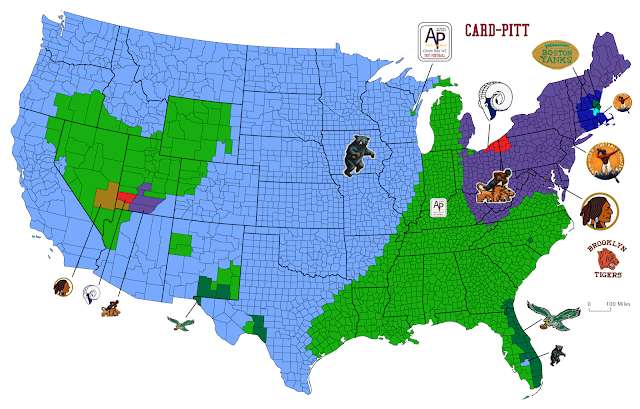NFL Empires: 1945
This is a continuation of my "empire" maps (where victors take the territory of the losers) of the NFL. Different than most such imperialism sports maps, instead of gaining all the loser's land from a victory home or away, the victor only gets territory for an away victory, and just two-thirds of it (or one-third for an away tie).
Before the season, Card-Pitt separated back into two teams, while Brooklyn merged with Boston as the Yanks.
My data was from Pro Football Reference and most of the logos from SportsLogos.net and Sports Ecyclopedia.
Here then is the map of the NFL empires after the 1945 season:
Cleveland (red) won the championship, ending nearly two decades of Green Bay/Chicago imperial domination. Cleveland won wherever they traveled, except at Philadelphia (dark green) (who were unbeaten at home, but not nearly so good on the road). Washington (gold) won the Eastern Division, but that didn't account for much land gained.
Here is the map before the season started, back in the days of baby bear blue:
Now that Cleveland won a championship, they're going to start a dynasty, right? Right?
























